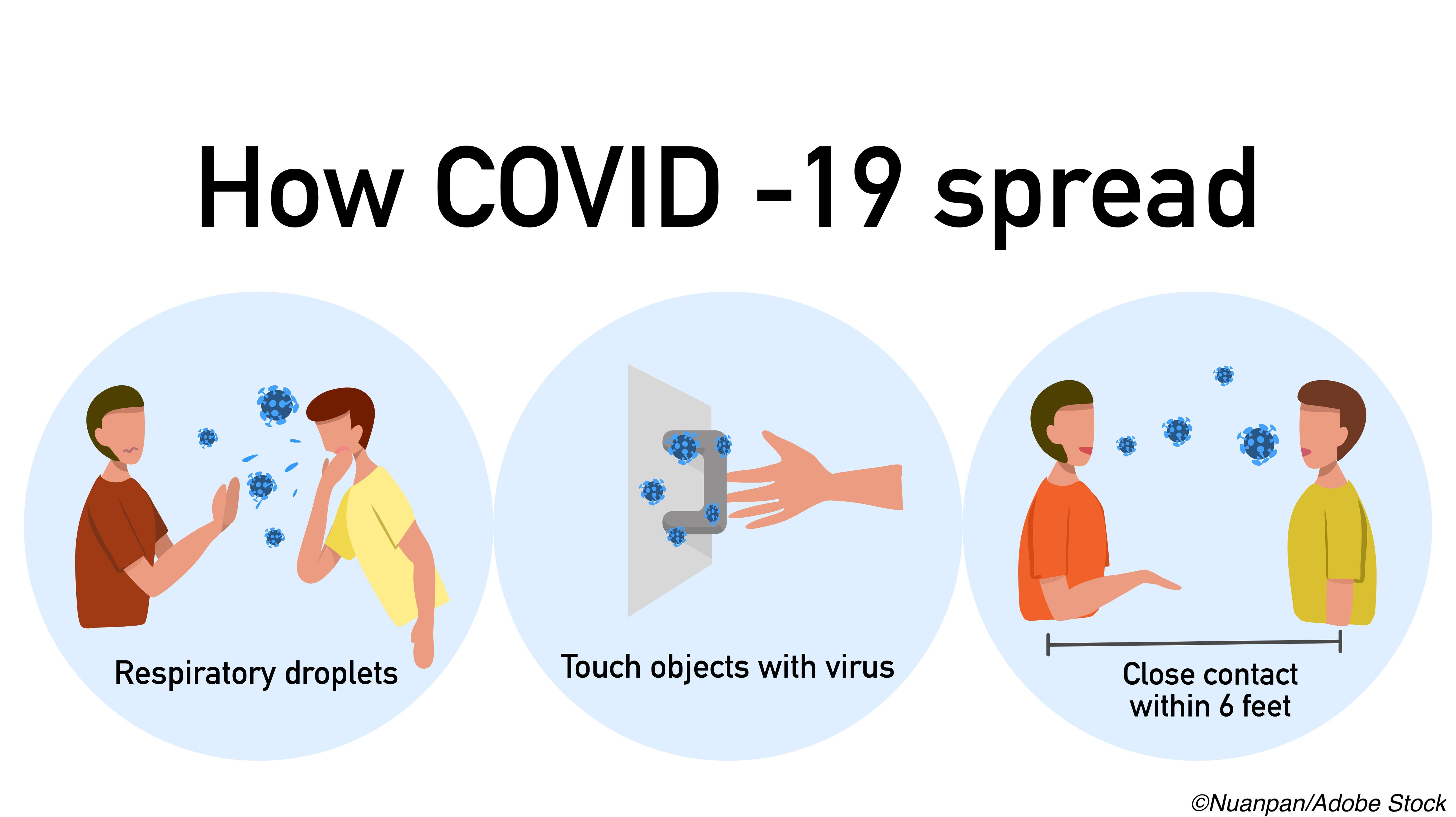
Unmasked human speech appears to have been the most important contributor to the rapid spread of SARS-CoV-2 and the Covid-19 pandemic, according to a review of the literature by U.S. National Institutes of Health (NIH) researchers.
Based on the review, the researchers concluded that a “preponderance of evidence” supports the conclusion that airborne transmission is not only the dominant pathway for transmitting the coronavirus, but that talking unmasked in confined spaces is the single activity that poses the greatest risk for spreading the virus to others.
“Since eating and drinking often take place indoors and typically involve loud speaking, it should come as no surprise that bars and restaurants have become the epicentre of multiple recent super-spreading events,” wrote Adriaan Bax, PhD, and colleagues from the NIH’s Laboratory of Chemical Physics.
Their review was published online June 8 in the Journal of Internal Medicine.
Infection with SARS-CoV-2 commonly starts in the upper respiratory tract but can migrate to the lower respiratory tract and other organs.
Bax and colleagues noted that viral shedding from the lower respiratory tract (LRT) during infection happens from breath and cough aerosol droplets, while the upper respiratory tract (URT) sheds virus via droplets emitted through speaking.
Respiratory droplets are almost all water, and when exposed to the air they rapidly lose water through evaporation. Smaller droplets may linger in the air longer than large droplets as aerosols.
“Although the largest speech droplets can carry more virions, they are few in number, fall to the ground rapidly, and therefore play a relatively minor role in transmission,” the researchers wrote. “Of more concern is small speech aerosol, which can descend deep into the LRT and cause severe disease.”
Indoor settings with inadequate ventilation are high transmission risk areas because these small particles are more likely to accumulate rather than disperse in such settings.
“Of most concern is the large fraction of speech aerosol that is intermediate-sized because it remains suspended in air for minutes and can be transported over considerable distances by convective air currents,” Bax and colleagues wrote. “The abundance of this speech-generated aerosol, combined with its high viral lead in pre- and asymptomatic individuals, strongly implicates airborne transmission of SARS-CoV-2 through speech as the primary contributor to its rapid spread.”
They noted that the importance of speech droplets in SARS-CoV-2 viral spread, due to their high liquid volume and extended length of suspension in air, “appears to be underappreciated by the public health community.”
“Clearly, the significance of speech aerosol as a vehicle for virus transmission depends on the viability and concentration of virus in oral fluid,” they wrote. “Whereas, this concentration can be very high for SARS-CoV-2, it remains to be established whether viral transmission via speech particles is unique to Covid-19 or general to all respiratory viral diseases.”
Next to vaccination, the researchers wrote, face masks and indoor ventilation should be recognized by public health authorities as key viral mitigation strategies.
Bax and colleagues wrote that masks serve several critical functions in protecting against SARS-CoV-2 transmission: they limit the escape of potentially infectious respiratory droplets and they help protect the wearer by reducing the inhalation of virus-contaminated aerosol.
In a study published in February of this year, Bax and colleagues showed that masks may also protect against viral spread by increasing the humidity of inhaled air.
The researchers noted that high humidity can reduce viral spread to the lungs by promoting mucociliary clearance (MCC) which helps eliminate potentially harmful pathogens which cling to mucus. Humidity also promotes immune system interferon response.
“High levels of humidity have been shown to mitigate severity of the flu, and it may be applicable to severity of Covid-19 through a similar mechanism,” Bax said in a press statement.
In their newly published review, Bax and colleagues noted that one of the most challenging aspects of containing the spread of Covid-19 has been the high degree of presymptomatic and asymptomatic transmission.
“As a consequence, a large and perhaps even dominant fraction of virus transmission takes place prior to the onset of Covid-19 symptoms, that is prior to coughing,” they wrote. “Considering that breath droplets are generated in the lower respiratory tract and are unlikely to be rich in virus in the absence of clinical symptoms such as cough, speech droplets must represent a far more prevalent mode of presymptomatic and asymptomatic transmission of SARS-CoV-2.”
- Unmasked human speech appears to have been the most important contributor to the rapid spread of SARS-CoV-2 and the Covid-19 pandemic.
- Next to vaccination, face masks and indoor ventilation should be recognized by public health authorities as key viral mitigation strategies.
Salynn Boyles, Contributing Writer, BreakingMED™
This research was supported by the NIH’s National Institute of Diabetes and Digestive and Kidney Disease. The researchers declared no relevant conflicts of interest related to this review.
Cat ID: 190
Topic ID: 79,190,730,933,190,926,192,927,151,928,925,934

